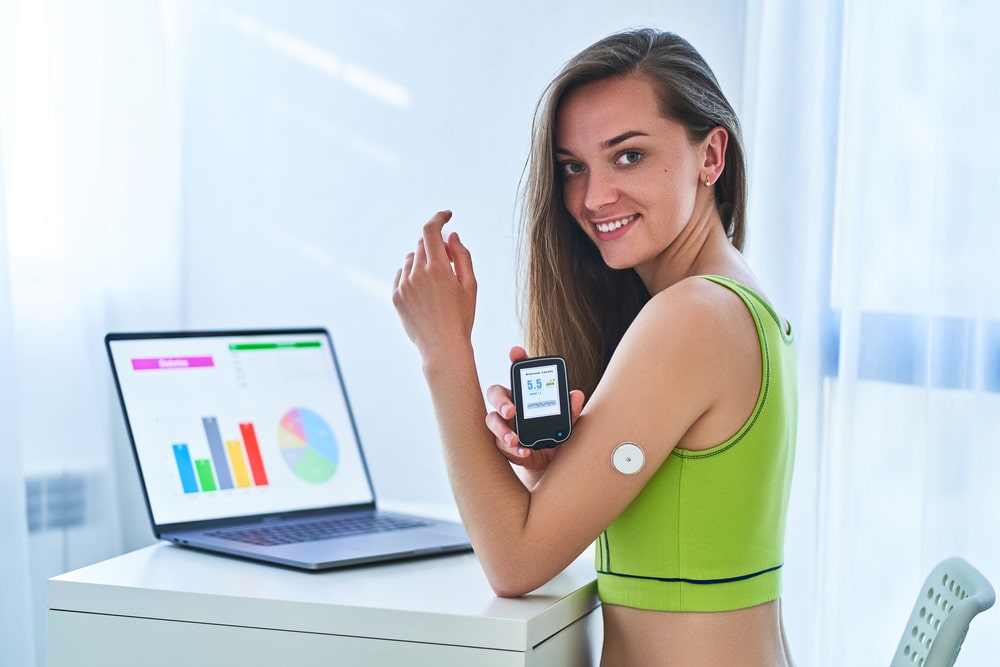Continuous Glucose Monitors (CGM) have transformed the landscape of diabetes management, offering unprecedented insights and real-time data that empower individuals to take control of their health like never before. These devices represent a significant advancement over traditional methods of glucose monitoring, providing continuous monitoring of glucose levels without the need for frequent finger pricks. In this comprehensive article, we explore the technology behind CGM devices, their benefits, challenges, and the profound impact they have on the lives of individuals with diabetes.
Understanding CGM Devices
Continuous Glucose Monitors are compact electronic devices designed to monitor glucose levels continuously throughout the day and night. Unlike traditional glucose meters that require manual blood samples obtained through finger pricks, CGM devices employ a small sensor inserted just under the skin to measure glucose levels in the interstitial fluid. This sensor detects glucose concentrations at regular intervals, typically every few minutes, providing a continuous stream of data.
How CGM Technology Works
The core components of a CGM system include:
Sensor: The sensor, usually a tiny electrode, is inserted under the skin, typically on the abdomen. It measures glucose levels in the interstitial fluid, which correlates closely with blood glucose levels.
Transmitter: The transmitter is connected to the sensor and wirelessly transmits glucose data to a receiver or smartphone app. Some CGM systems integrate the transmitter directly into the sensor.
Receiver/Display Unit: The receiver or smartphone app displays real-time glucose readings, trends, and alerts based on the data received from the sensor.
CGM devices provide users with continuous visibility into their glucose levels, allowing for early detection of trends and fluctuations that may require intervention, such as adjustments in insulin dosing, dietary choices, or physical activity levels.
Benefits of Continuous Glucose Monitors Devices
The adoption of CGM devices has revolutionized diabetes management in several key ways:
Real-Time Monitoring: CGM devices offer immediate feedback on glucose levels throughout the day and night, enabling timely adjustments to insulin therapy and other diabetes management strategies.
Improved Glycemic Control: Studies have consistently shown that CGM use leads to improved glycemic control compared to traditional methods of monitoring. By providing more accurate and frequent glucose readings, Continuous Glucose Monitors devices help reduce the risk of hyperglycemia and hypoglycemia.
Reduced Need for Finger Pricks: CGM devices significantly minimize the need for finger pricks, which can be both painful and inconvenient. Instead, users can rely on continuous data streams from the CGM system.
Insight into Glucose Patterns: Continuous monitoring allows users and healthcare providers to identify patterns and trends in glucose levels over time. This information is invaluable for developing personalized diabetes management plans tailored to individual needs.
Alerts and Alarms: CGM systems are equipped with customizable alerts and alarms that notify users of impending hypo- or hyperglycemic events. These alerts provide early warning signs, allowing users to take prompt action to prevent severe complications.
Explore More: Noninvasive Continuous Glucose Monitoring and Continuous Glucose Monitors
Challenges and Considerations
While Continuous Glucose Monitors devices offer numerous benefits, they are not without challenges:
Cost: CGM systems are not always fully covered by insurance policies, and they can be somewhat pricey. High costs can pose a barrier to access for some individuals with diabetes.
Accuracy: While CGM technology has improved significantly, occasional inaccuracies may occur, particularly during rapid glucose fluctuations or when glucose levels are extremely high or low. Calibration with traditional fingerstick measurements may be required periodically to ensure accuracy.
Technical Issues: Like any electronic device, CGM systems may experience technical issues such as sensor failures, signal loss, or compatibility issues with other devices.
User Training and Education: Proper training and education are essential for effective use of Continuous Glucose Monitors devices. Users must understand how to interpret glucose data, respond to alerts, and troubleshoot common issues.
The Future of CGM Technology
Continuous Glucose Monitors continue to evolve rapidly, driven by advancements in sensor technology, data analytics, and integration with other diabetes management tools. Future developments may focus on:
Improved Accuracy: Enhancing sensor accuracy, especially during rapid glucose changes or extreme glucose levels.
Enhanced Integration: Integrating CGM data with insulin pumps and closed-loop systems (artificial pancreas) to automate insulin delivery based on real-time glucose readings.
Enhanced User Experience: Streamlining device usability, reducing calibration requirements, and enhancing connectivity with smartphones and other digital health platforms.
Conclusion
Continuous Glucose Monitors have revolutionized diabetes management by providing individuals with unprecedented access to real-time glucose data and actionable insights. Despite challenges such as cost and occasional accuracy issues, the benefits of CGM devices in improving glycemic control, reducing complications, and enhancing quality of life are profound. As technology continues to advance and accessibility improves, CGM devices are poised to play an increasingly vital role in diabetes care worldwide.
In conclusion, Continuous Glucose Monitors are not merely technological innovations; they are transformative tools that empower individuals with diabetes to live healthier, more informed lives. By bridging the gap between glucose monitoring and personalized care, CGM devices represent a beacon of hope for the future of diabetes management.


